“For me it wasn’t about qualifying [when I accepted the job as women’s coach], it was about stability,” said Trinidad and Tobago Women’s National Under-20 Team head coach Jamaal Shabazz. “It was about creating what we created back then, which was a framework for players to go on scholarship and develop.
“[…] The public’s emphasis is they want the team to qualify. And I want that too but laying the framework with these limited resources and building that foundation again so we can produce players is the kind of stability (I can offer).”
Trinidad and Tobago hosted the CONCACAF Women’s Under-20 Championship in Couva last month but, despite home advantage and scoring first in each match, the hosts lost all three group games to Haiti (2-3), Canada (1-4) and Costa Rica (1-2).
In the first of a two-part series, Shabazz talks one-on-one with Wired868 about his role in developing Trinidad and Tobago women’s golden era and his current aims and vision for the programme:
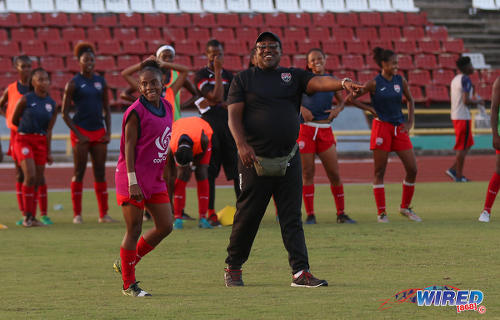
(Courtesy Sean Morrison/Wired868)
Wired868: So what are your thoughts on the just concluded tournament?
Jamaal Shabazz: The tournament has shown that the pendulum is swinging. I am impressed with where the women’s game has reached since my last outings in the game—especially with the way that Mexico and Haiti in particular have performed.
We have come to expect dominance from USA and Canada and even, in the past, Costa Rica was an emerging force. But now, you see Haiti’s programme bearing fruit and Mexico, with their local league. When I look at the (Mexico) roster, all their players are with clubs and it is bearing fruit.
Maybe 15 years ago, Trinidad and Tobago and Jamaica were the forces in women’s football in the Caribbean, with Haiti running a distant third. Now they have gone past us.
Wired868: What do you attribute that to?
Shabazz: I think it is emphasis. Even in the (Jack) Warner days, he would ensure participation in the women’s game. Back in 1991 when women’s football was relatively new to the region, Trinidad and Tobago would beat Mexico… From that time to now, Mexico have tried to move their programme from participation to competing and, in the last number of years, to qualifying.
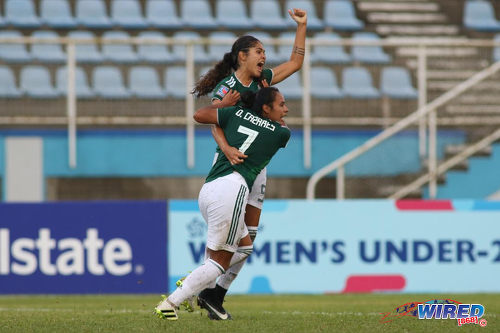
(Courtesy Chevaughn Christopher/Wired868)
That takes a certain level of commitment from not just players but administrators across the board. After Warner, we had [Raymond] Tim Kee, who had a difficult economic period, so the development aspect of the women’s game was absent.
Our revolution started in 2000 when we went to CONCACAF and were slaughtered by USA (0-11) and Brazil (0-11) and drew with Costa Rica (2-2). We saw then that there was need to develop a new cadre of players and we had screening sessions across the country. This was not the Federation; this was a group of people concerned for the women’s game…
Wired868: Who was in that group?
Shabazz: People like Abdul Rasheed in St Madeleine; he is deceased now. And Marlon Charles, Kester Lendor, Jinelle James, Izler Browne… We would go to the primary schools every year and we recruited a bunch of players who we would train four days a week—outside of the Federation (programme)—until they reached the Under-15 bracket. So these players came through some kind of development programme.
This programme went on until about 2011/2012 [when I went to coach in Guyana]. So until the establishment of the TTFA’s Elite Development Programme (in 2017), there had not been a specific group doing technical development with female players. And remember with our female players, we are already starting well behind North America because of the age that they start to play…
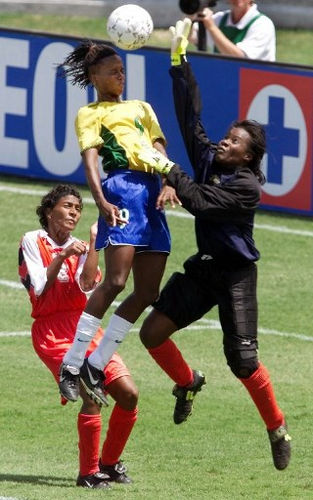
Da Silva scored six times in Brazil’s 11-0 win.
(Copyright AFP 2018/Jeff Haynes)
Wired868: When you say “across the country,” can you be more specific? Did we have someone in Tobago? How did we get a Kennya Cordner? And how was this funded?
Shabazz: We had Corbin Cooper in Tobago and Arnold Murphy in South. We had Slim Andalcio in Toco. We had point people across the country who had a common interest and a common desire to develop the women’s game. For six months in 2000, we trained four days a week just doing technical development.
The biggest problem was transport to get the children to come to training. We used to train at Carib Ground and at UWI. We approached (former Director of Sport and Physical Education at UWI) Dr Iva Gloudon and she brought everybody together and made us develop a strategic plan and then she went and found the money for meals for the girls after training. Also some of the senior players like Izler would put money for transport and we would tell the girls if you don’t have the money for transport, borrow the money.
This is where we saw girls like Maylee Attin-Johnson, Tasha St Louis, Dernelle Mascall and Ahkeela Mollon emerge. They never missed a session. We trained four days a week from 4pm to 6pm and three months would pass and they would never miss a session.
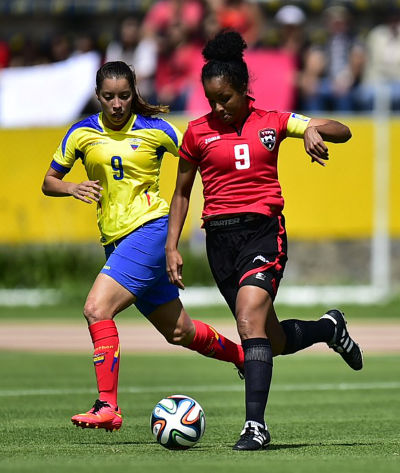
(Copyright AFP 2014/Rodrigo Buendia)
Maylee was 13 years old then, some were 14. None were over 15. We contacted Bertille St Clair in Tobago and he put us in touch with Corbin Cooper. And this is how we got the Forbes sisters, who came as two 12-year-olds. They would come on a weekend and stay at my home. There were seven Tobago players. There was Candice—I can’t remember her surname—Karyn Forbes, Kimika Forbes, Kennya Cordner and several others. One or two of them had a place to stay in Trinidad and the rest would stay by me.
I remember that, to get them to come, the former head of the THA, Orville London—he was a journalist then—went and spoke to their parents because they didn’t want to send them to Trinidad at first.
Wired868: Did the THA pick up the costs?
Shabazz: Dr Gloudon would find the money. (Laughs). She was a phenomenal person in terms of getting things done. After about a year, the TTFA started to get involved with the team. In 2001, (Brazilian coach Rene) Simoes came and took over the whole men’s programme. When I asked Mr Warner if they would help us, he said they didn’t come for women’s football. But then we played the Men’s Under-17 team a practice game on the Hasely Crawford Stadium training ground and lost 5-1.
After that, they asked for a meeting with our staff and Simoes suggested that Professor Leal be put over us to take over the women’s programme because it had potential. So that was the first time I had to bow to the master. (Laughs)
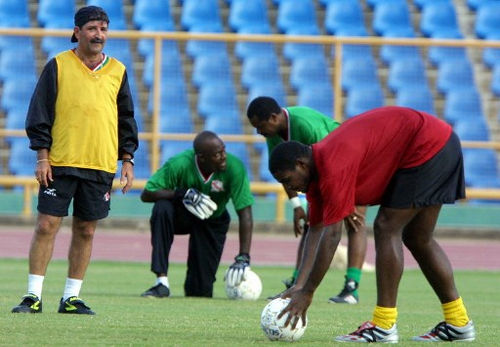
(Copyright AFP 2018/Juan Barreto)
Wired868: That is how you saw it? ‘Bow to the master’? (Shabazz laughs again) What do you think Leal brought to the team?
Shabazz: He brought a tremendous amount of knowledge and know-how. I had been trained in [courses in] Brazil in ’88 and ’89 but what they brought was the practical application of how to do a programme—on and off the field. Things like nutrition and how the staff should operate as a group rather than one man and his dog kinda thing.
Leal was phenomenal. That’s why I say he was the first master because we really, really learned. It was funny. People would pass and say ‘Jamaal, you’re licking the Brazilian’s bottom.’ (Laughs again) But it was a real eye-opener. I remember Dr Gloudon talking to me and encouraging me to submit because if I submit the other coaches [on the staff] would submit.
Wired868: So there was friction?
Shabazz: Well, there were coaches who felt that these people now come and why are we giving them the programme. But they showed us how to build. They spent about a year with the team and then they left not long after. The girls had a nice CONCACAF Under-20 under Leal, which excited the nation and was the first tournament for Maylee and the likes of Avian Douglas.
Before they left, Leal told Marlon and myself that what we did in training those girls for four days a week and focusing on technical development laid a tremendous foundation and these girls one day will go to the World Cup.

Gloudon played a key role in the development of women’s football in T&T.
(Copyright UWI)
And we knew because when we started them in 4v2 and 5v2, they couldn’t even warm up properly. And then when we went in the middle—Marlon and myself—we couldn’t even keep up with them. And we brought in people like Denzil [Theobald] and the Caledonia players. We would make them play two touch or one touch against the girls and they would help and this is where we saw the improvement. and when we put guys in there with them, they would keep the ball.
[…] Then we went to the CONCACAF Gold Cup and the first game was against Panama and we had a player sent off—Leslie James—and they outscored us 4-2. The second game was against USA and everybody expected us to be slaughtered but we parked the bus and, at the end of the first half, they were leading 1-0 which was unheard of in CONCACAF. We lost 3-0 in the end and we got three chances.(Editor’s note: USA defeated Panama 9-0 and Costa Rica 7-0 in their other group matches).
Our goalkeeper at the time, Lisa-Jo Ramkissoon, was so excited after the game in the press conference that, when they asked her how she felt, she said, ‘Well it is a tremendous feeling to win this game.’ I had to kick her under the table to remind her that we lost. (Laughs)
But to lose 3-0 after scores of 12 and 17 over the years, it was a great feeling for all of us. But I had made a pledge that never again would a Trinidad and Tobago team get double figures against the US and these teams.
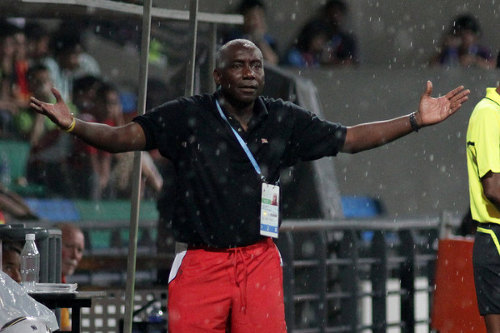
(Courtesy SPH-SYOGOC/Eddie Chen)
Wired868: How did you feel two years ago then when we lost 22-0 with our Under-15 team, coached by [your current assistant] Marlon Charles?
Shabazz: I felt if even Pep Guardiola coached that team, the scoreline would remain the same. Those players were not ready to play teams like the USA and Costa Rica. When the administrators entered the team, they didn’t understand that most of those players had started playing three and four months (earlier). But then they said that the TTFA would have gotten a fine if they didn’t carry a team…
People blamed the coach but, if that team had any of the ten top coaches from Europe, the score would be the same; they were not developed. Most of that team was used at U-17 level in Haiti [last year] and there is so much to teach because they are beginner players.
Wired868: What happened to the developmental programme when you left to coach Guyana in 2011?
Shabazz: This was immediate post-Warner and there wasn’t much funding. Tony Harford came in under Lennox Watson and started to get things going but then, after Watson left, the Tim Kee Administration was forced to make priorities and the senior men’s team became the priority. You needed a drive too because I picked up where Dr Gloudon left off. Her attitude was ‘You can find a way.. I think that the others just didn’t continue to do it on their own and it fell by the wayside and here we are today.
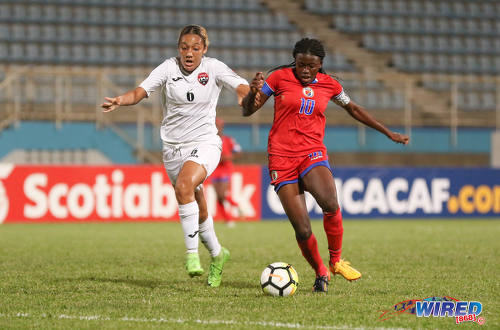
(Courtesy Sean Morrison/Wired868)
Wired868: So administrators let down the women’s programme?
Shabazz: I’d say over the years, yes. But to be fair to Jack Warner, he always ensured the team participated. I remember Lincoln Phillips brought in Randy Waldrum to coach a youth team […] and we had to lose by six goals or less against USA in the last game for a play-off spot and we get nine. And Jack Warner rewarded that team by sending the staff and the girls to Tobago for a week. And I said ‘What is that one? When we come back from tournaments we never got any of that.’
And you know what he said? He said ‘If it was a local coach, they would have gotten 10!’ (Laughs)
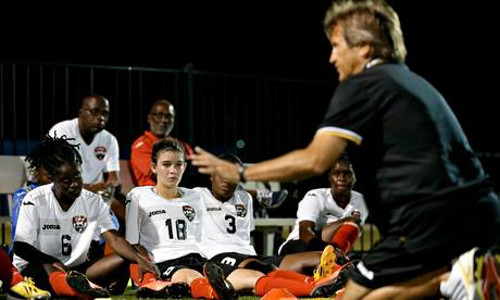
(Courtesy TTFA Media)
Waldrum came within one point of qualifying [for the 2015 Canada World Cup] although we forget that team got four bites of the cherry and still didn’t qualify. We felt that [relative success] was off of our backs.
Wired868: Apart from Leal and Waldrum, Norwegian Even Pellerud was the other foreign coach in the women’s programme. What did he bring?
Shabazz: Pellerud was here from 2008 to 2011. The first thing Pellerud brought was the colour of respect.
Wired868: The ‘colour of respect?’
Shabazz: Yes. I remember before his first meeting with the parents, he told me he wanted to train six days a week and every third week he wanted to do seven. I found him to be naive at the time. I told him with Maylee and their team, I tried to get them to train five days a week and the parents kicked up against it so we ended up with four. And lo and behold, the first meeting he had with the parents he asked them for six and there was not a single dissenting voice. (Laughs). And I am talking about people coming from La Brea, Guayaguayare… This was the next master. He got total support.
I was then the assistant director of the women’s game and I was there at every session, learning from him. His emphasis was purely on fitness and pressing. He didn’t spend a lot of time on technical development. His philosophy was intensity (slaps hand) and running the opponent out of the park by intelligent pressing movement. His methods were based on aggression in training. He got the girls to respond very well but they were not a team to make five (consecutive) passes; they were a team to work hard and get behind the opposing defence.
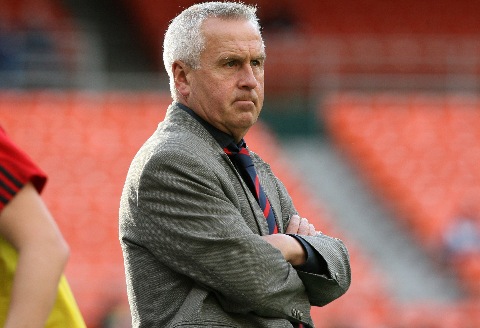
Wired868: How much of that aggression remains or did you try to keep in our sessions?
Shabazz: Coming back into the women’s game last August, there were three weeks before the Under-17 qualifying tournament. I was looking for a coach because I was brought in to coach the seniors and U-20s. We spoke to Richard Hood and basically he and the (TTFA) didn’t agree on financial terms. So (technical director Muhammad) Isa suggested that I hold the team.
I did more technical work with the team. I believe this is football and, while you need to be aggressive, I think if I have to choose in developing an aspect, I would go with technique. So the period we had, we tried to focus on technique. In the small-sided games, we encouraged them to squeeze and press but it was alien to them. Even with the Under-20s, the time they spent with the Italians was more technical-oriented.
In the football world now, we see people use more football training for fitness training. So with limited guidance, we tried this for six weeks with the Under-20 girls but we learned afterwards that the intensity wasn’t there (in the sessions).
After one week together, we played Jamaica but we had hoped to get three games against Chile in December, which the Federation didn’t get because they didn’t have funding for it. We felt if we had gotten these games, it would have better schooled us as to where we were in terms of our ability to compete in January.
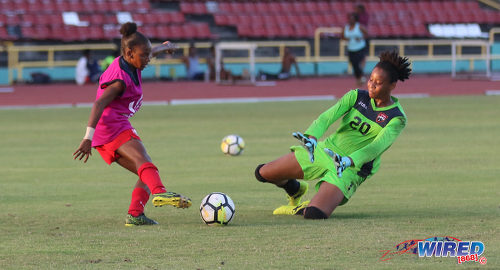
(Courtesy Sean Morrison/Wired868)
Wired868: And where did we fall short in January?
Shabazz: I think our inability to do repeated football actions. We scored all the time but we were not able to keep that action—to stay compact as a team, to be able to squeeze and press them, to be able to just keep our legs…
Wired868: How could a team that was together for months be unfit?
Shabazz: Well, I think they were together from March and then they had a three-week break just around July/August. And then that was the time I was with the U-17s and there was also school football. So there wasn’t that emphasis.
I was focusing on the Under-17s at the time, so we had them under some coaches like Ayanna Russell and Dernelle Mascall who had C licences. Marlon Charles would take them occasionally and Anton Corneal but the emphasis was on teaching them aspects of the game (like) possession, closing the ball down; the emphasis was not on the conventional running, fitness…
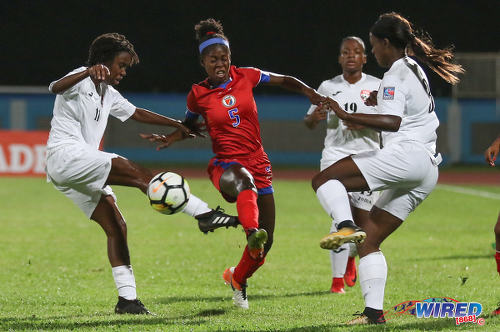
Haiti won 3-2.
(Courtesy Sean Morrison/Wired868)
Wired868: Was there a clear philosophy during the time they were under so many different coaches?
Shabazz: Yeah. We focused on keeping the ball and trying to play the ball over the top to the flanks because we recognised we had quick strikers. We knew that (Dennecia) Prince would be a force, the big one. But she is anaemic and that is something that affects the women’s programme. We did tests and we found that six of the best players on the Under-17 Team were anaemic and three on the Under-20 Team. They have to focus on building up their iron and on their diet but, according to Dr Zaida Hassanali, it would take about three months (for us to see results from that).
Wired868: If the Italian contingent got about US$24,000 or US$27,000 a month, why could the TTFA not agree personal terms with Richard Hood?
Shabazz: Well, that is a question you will have to ask the administration; I can’t answer that.
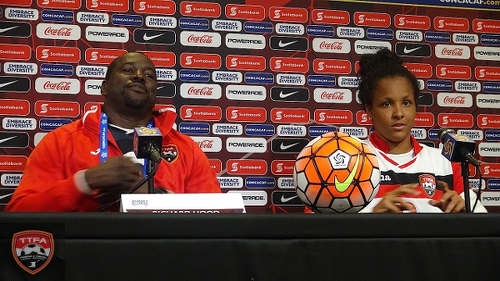
(Courtesy CONCACAF)
Wired868: You understand that the public might feel the interest in this team and the investment from the TTFA seemed to fall away as soon as the Italians left?
Shabazz: The financial aspect of the TTFA’s dealings is not (within) my purview. I recommended Hood and he outlined some stuff and it didn’t materialise…
If we were able to get those friendly matches in December, I think the reality of the team would have been better served.
Wired868: You’d say your expectations when you accepted the job were not met?
Shabazz: I felt we would have gotten more resources but I was told the resources just were not there. So we continued to work. This is the difference between the local coach and maybe the foreign coach. I felt one of the reasons Morace left—this is my opinion; this may not be the fact—is that when they looked at the pool and the players they sidelined and the resources they needed (to succeed), I don’t think they were seeing it.
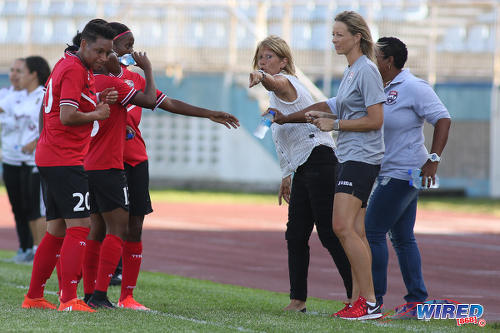
The two nations played to a goalless draw at the Ato Boldon Stadium in Couva. Looking on (second from right) is assistant coach Nicola Williams.
(Courtesy Chevaughn Christopher/Wired868)
For me, it wasn’t about qualifying [when I accepted the job as women’s coach], it was about stability. It was about creating what we created back then, which was a framework for players to go on scholarship and develop.
[…] The public’s emphasis is they want the team to qualify. And I want that too but laying the framework with these limited resources and building that foundation again so we can produce players is the kind of stability [I can offer], getting coaches working together and, more importantly, developing a cadre of female coaches from among the ex-players who understand the passion and commitment.Wired868: You mention developing a new cadre of coaches but I am seeing the same old names on your staff, like Marlon Charles…
Shabazz: Well, when a coach goes to work, he brings the people who he feels he is comfortable working with. I didn’t hear anybody say anything when Simoes brought his people or Morace brought her people…
Wired868: But you spoke about developing new coaches…
Shabazz: Well, I can show you. We have Ayanna Russell, Dernelle Mascall, Janelle Noel, Ahkeela Mollon, who are working as developmental coaches within the elite programme. So there are a cadre of female coaches being developed and I have evidence of that.
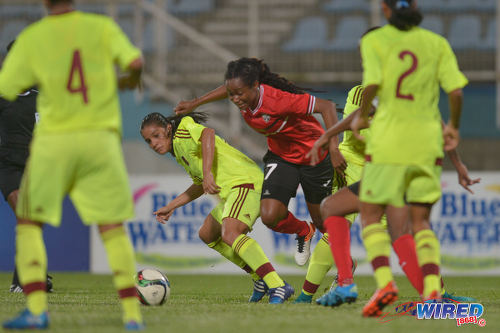
Venezuela won 3-1.
(Courtesy Chevaughn Christopher/Wired868)
I don’t see how we could question Marlon’s credentials as a coach. Are we basing it on the fact that he took a team that got 21 and 22 when any coach that took that team would have gotten the same results?
Wired868: Well, I am referring to your comment about bringing through fresh blood. But, as you mentioned Marlon, how do you think you complement each other and what does each of you bring to the team?
Shabazz: I think Marlon’s patience and his ability to improve technique is one of the pluses with the drills he uses and his insight into the game. I think I complement him by bringing a bit more aggression and animation in the exercise…
This is the relationship we have since 1984 when we travelled as players and shared a room together with ASL and the Alvin Corneal Coaching School. I marvel at what people say about him without seeing him work; it is hilarious for me.
[…] I think Marlon Charles has been ill-treated and disrespected by the former TTFA Administration but he showed resilience. He has not uttered a negative word and he shows a kind of patience that is admirable. I don’t have that kind of patience. I like working with him and I think we work very well together.If people are going to judge us on the Under-20 and Under-17 teams not qualifying, that’s fine; they are entitled to that. But I am here to provide stability and that stability is to build the programme.
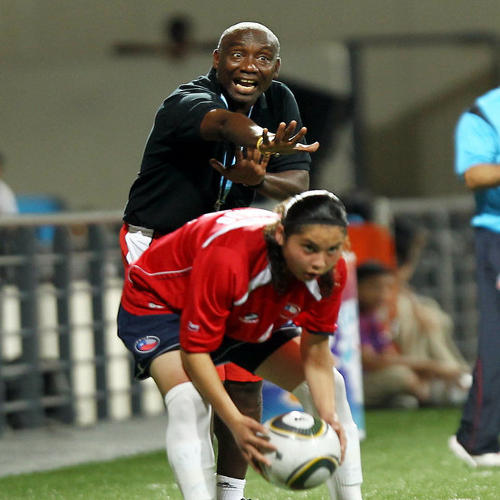
(Courtesy SPH-SYOGOC/Seyu Tzyy Wei)
Wired868: So what should we judge you on? What would you consider success?
Shabazz: I think people could form their own…
Wired868: (Interrupts) No, what do YOU think is a fair way to gauge the success of your work?
Shabazz: The way to judge my work is (to see if we can) produce players that can play with A1 schools in the US and can get into professional teams in two or three years’ time. How we are able to narrow and deal with the deficiencies we see now and how it is addressed over that period of time before the next Under-17 and Under-20 tournaments.
I would judge myself and my work if we go to the next U-17 and U-20 tournament and are slaughtered. And also how many youth players now can go in the Senior Team and hold their place.
Everybody is saying now that (the France 2019 Women’s World Cup qualifiers) is another bite of the cherry. I am not saying that. I am saying the Maylees and Tasha St Louis and that crew are on the last of their legs. When Izler Brown and Ricarda Nelson and them were on the last of their legs in 2002, we injected Maylee and them and got a lot of criticism for bringing seven or eight youth players into the senior team and going to CONCACAF. I see this as a similar period here.
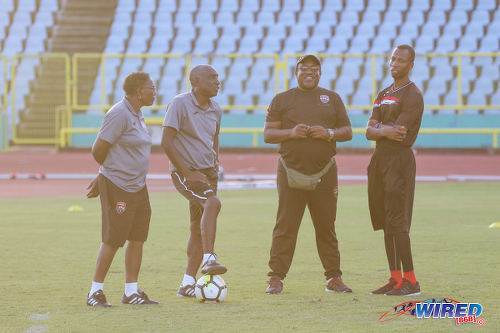
(Courtesy Sean Morrison/Wired868)
Wired868: Wasn’t the priority always to qualify for the France World Cup when we brought in Carolina Morace? We came within a whisker under Randy Waldrum, so isn’t the priority now to qualify?
Shabazz: The priority was that under Carolina but, under me, my priority is stability. I’ve to think beyond a foreigner. I’ve got to think about what happens when the tournament is finished.
Wired868: You talk a lot about development, would it have been better for you then to stick to the developmental side rather than to be head coach? You said before that you were not interested in coaching anymore, so what made you go back?
Shabazz: We need to provide that stability. There was a lot of uncertainty with the leaving of Ms Morace. And I felt my presence on the field would help because these—in particular the senior girls—were our girls. Of course I have no problem in being judged by the results. People like to say coaches need time but when a coach accepts a job he understands fully the implications.
[…] Time is important but the courage to start a process to me is more important always.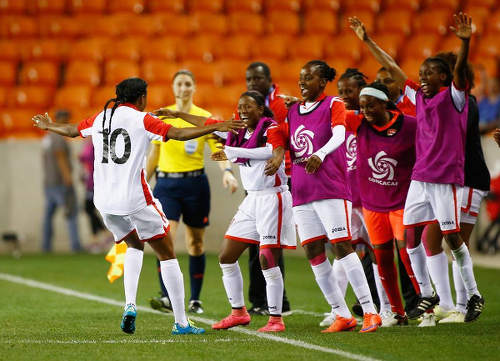
(Courtesy CONCACAF)
Wired868: Hood coached a lot of these women before and the women once mentioned Angus Eve as a coach they would like to have. You don’t think anyone else could have brought stability to the women’s programme and done the job?
Shabazz: Those questions are questions for the administrators. I was approached and I had to make a judgment call based on the scenario and I accepted. They didn’t choose to approach anyone else. So I think that question would be better for them…
Editor’s Note: Click HERE for Part Two as Jamaal Shabazz shares his vision for the “Women Soca Warriors”, what went wrong with the U-20s, why he would withdraw the U-15 Team from competition and fires back at the “Pro League haters.”
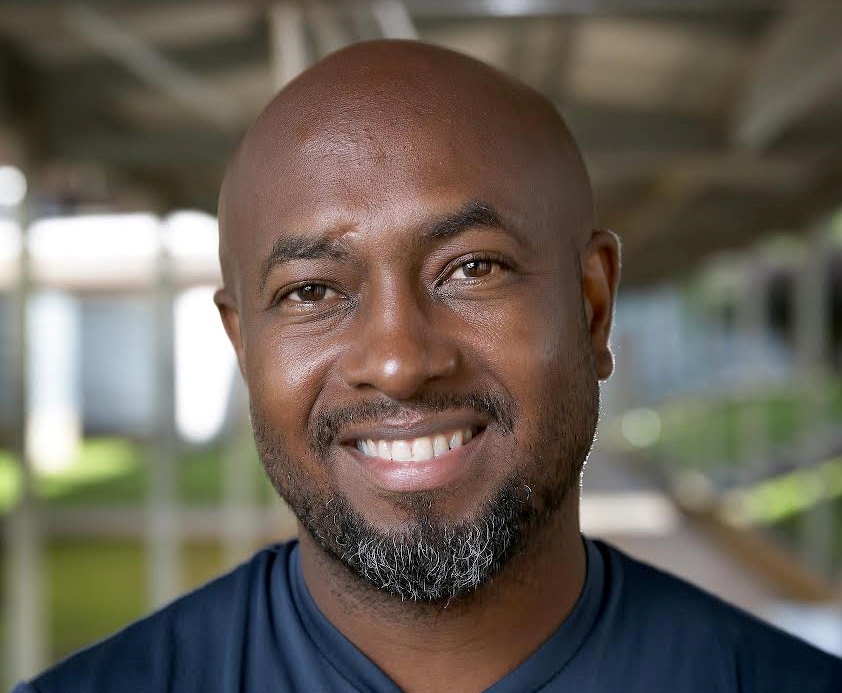
Lasana Liburd is the managing director and chief editor at Wired868.com and a journalist with over 20 years experience at several Trinidad and Tobago and international publications including Play the Game, World Soccer, UK Guardian and the Trinidad Express.
 Wired868 Wired868 for smart sport news and opinion
Wired868 Wired868 for smart sport news and opinion
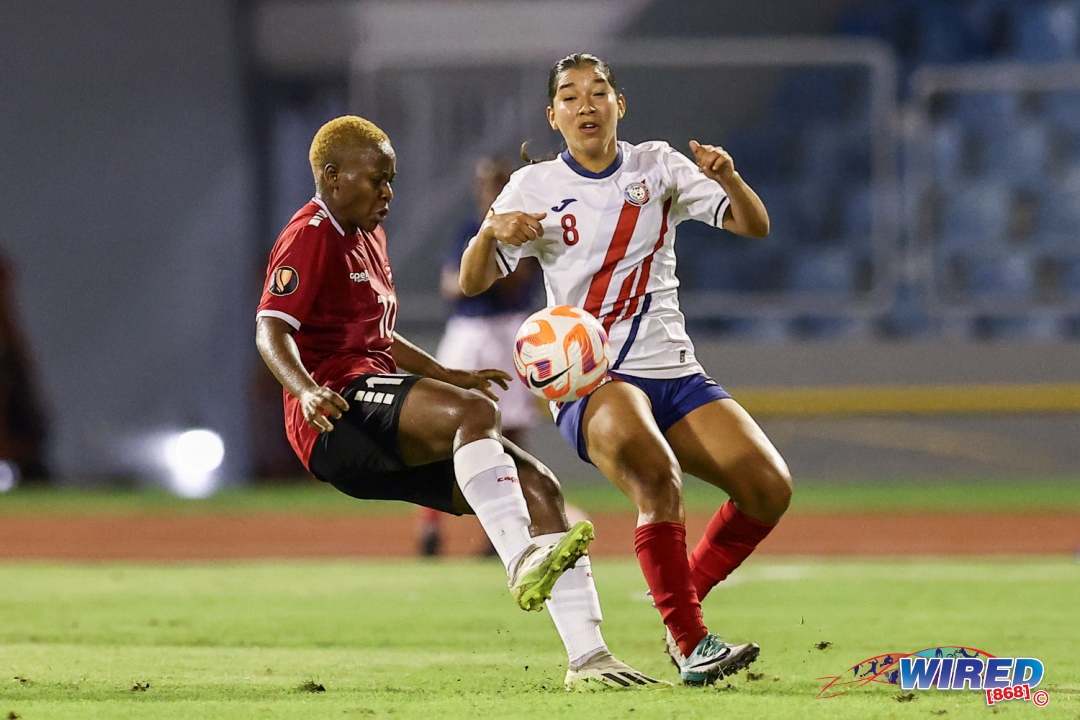
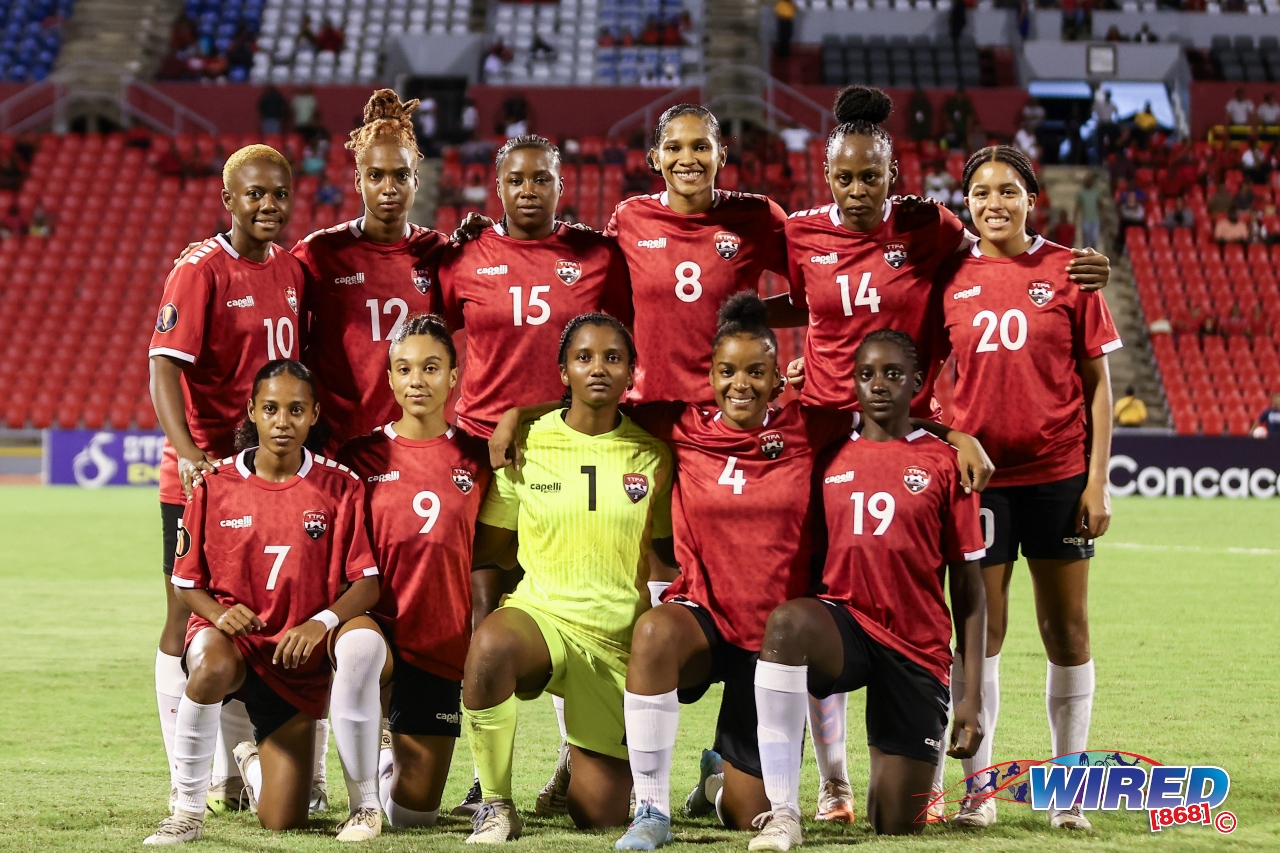

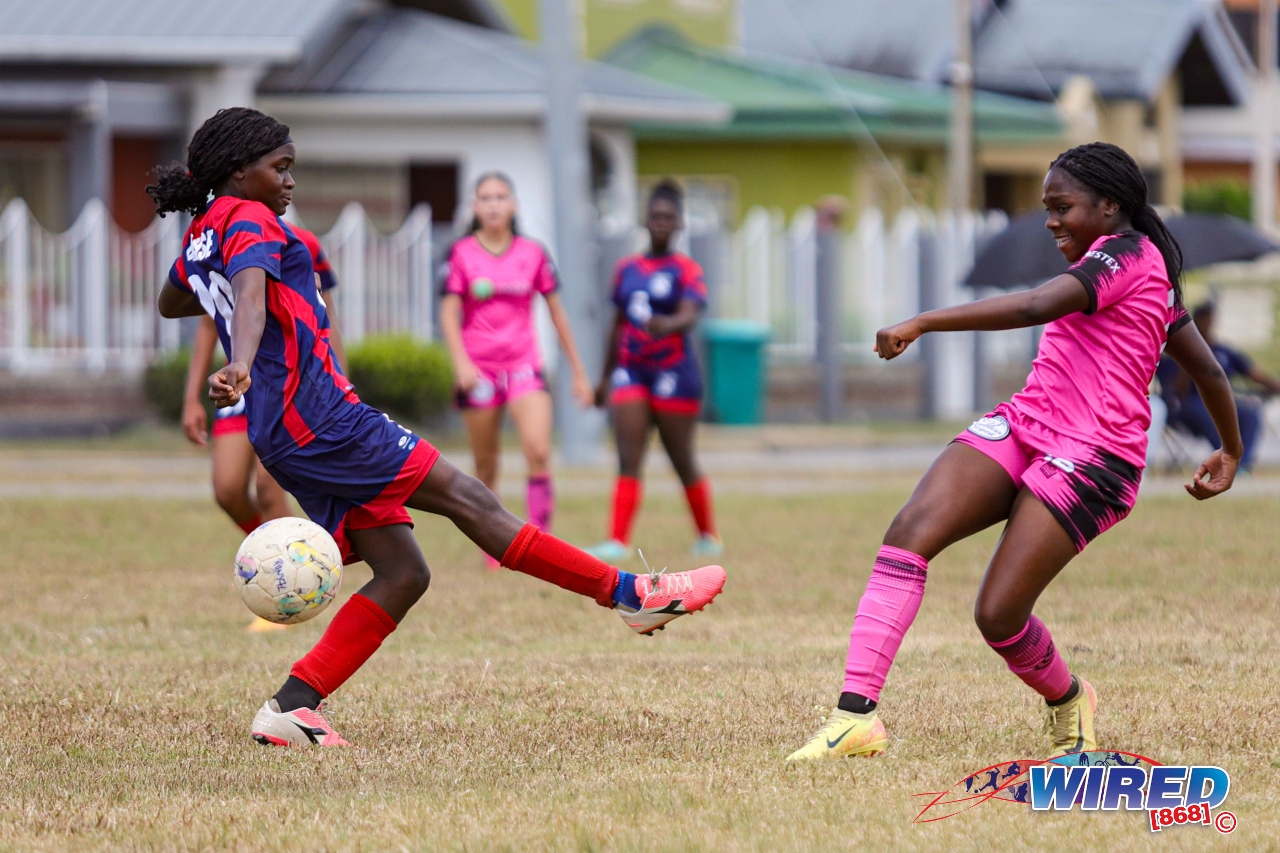

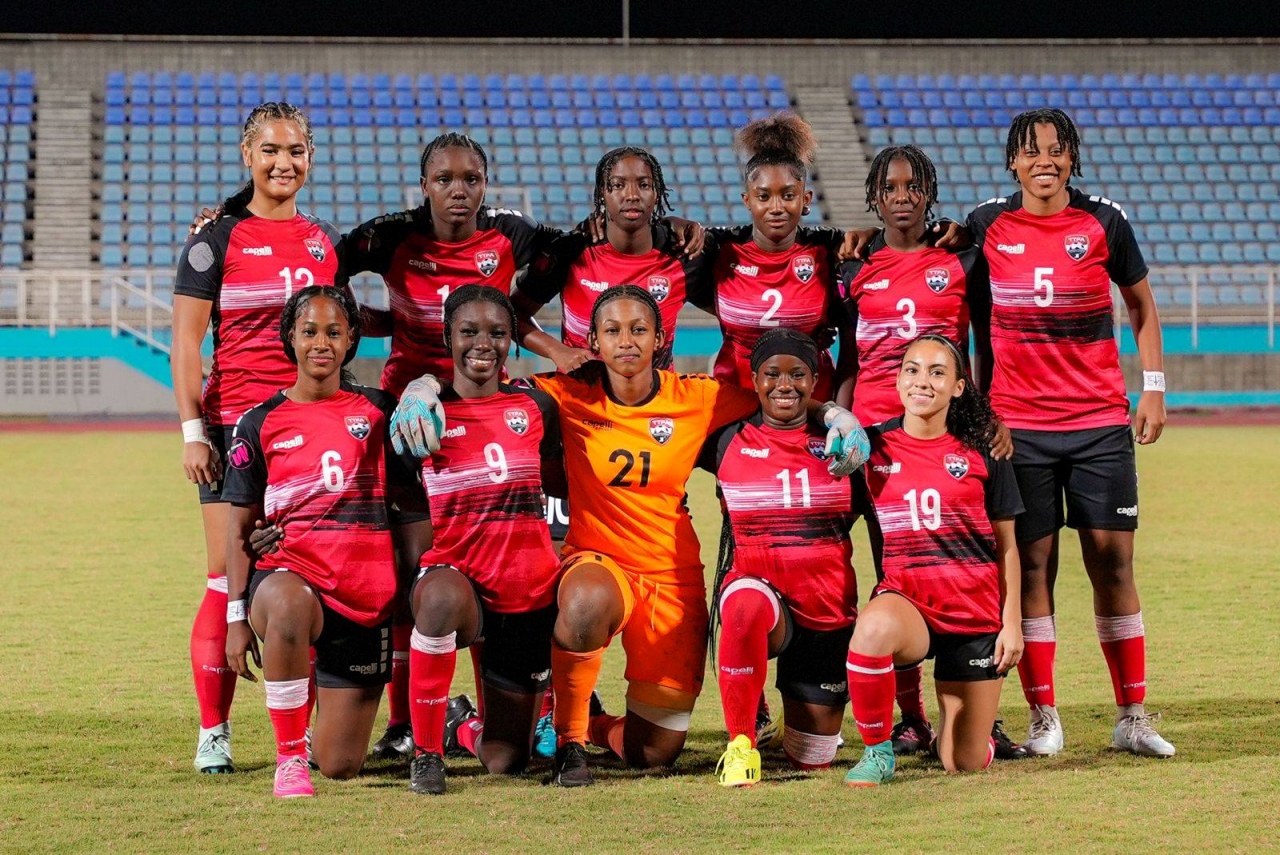

It wasn’t about qualifying?
So why even bother?
There isn’t a proper Women’s league in the country..
Even the SSFL has no development for the males far more the females..
Shabazz is NOT a developmental coach
Oh larrrd, Jamaal is a good pal but I ent too sure he makin much sense. If he sees himself as a development coach for women football then he should be placed in that capacity.
Results-oriented coaches should be appointed as head coaches of the various teams.
The ultimate goal of the senior women team ought to be qualification for 2019 World Cup and 2020 Olympics.
The mandate of the head coach should be synchronized with that goal.
And that mandate can be broken down into a phased process starting with Caribbean dominance.
Anything otherwise, will be an exercise in excuses much the same as Jamaal has so elequently expressed following failure of the Women U17 and U20 teams at recent CFU and CONCACAF World Cup Qualifying Tournaments – both of which he guided as head coach.
Ray Mitchell take a read
You go to a tournament to qualify not to showcase but after reading this interview I now believe why certain players were allowed to start or even play while the other players on the bench who were already on scholarships were not given a chance to showcase their talent. These girls trained there were some that should if gone back to school but stayed and who was even more talented than some fitness level even higher but were down played because Shabaz want his scouts that he invited to see his favorite player.come on nah man.
Note this program was brought by Corneal.
2010 This was the launch of the program
I am seeing again names called. As coaches doing development work and elite programs and I wonder at their pedigree
Marlon Charles has paid his dues ,he has put in the work ,has coached at all levels . I wonder if he was ever given a free hand to express his philosophy as he did with Jane Public.
So it is the same thing over and over because all they want to do is to continue making the monies while mamaguying everybody including themselves Them really good yes steeuuppss
Ten yers ago Corneal and Shabazz initiated a women’s program designed to the same things spoken about here, promises were made, and none fulfilled, I will find the photos and post them here. So this is not news to me.
I was invited and told bring present women coaches that I knew wanted to be involved to develop players, we have heard nothing of it since.
Stay tuned.
Brian, correct me if I’m wrong, but I don’t even recall DJW publicly addressing Morace and her staff’s departure.
Nope. He doesn’t really communicate to stakeholders, hence one of the reasons for the lack of supporter buy in. Who is going to hold him accountable?
He hasn’t addressed our senior world cup campaign either. Nor has anyone else to date.
Is there a public relations person or staff still? Those folks seem to be overly quiet. Whether by their own will or by DJW’s..
I suspect if there was more success on the field we would see and hear more chest beating, but oh well.. #oversizedegohurts
Good interview. Very glad the coach was receptive to such an interview. I really rate him for this, however, after reading, there are questions about the coach hiring process and the role of the techincal director, Anton Corneal and the technical committee, if any at all. Also, was Shabazz paid or did he want to help stabilize at his own time and expense? Is he that philanthropic? Were the Morace and staff salaries used for the salaries of the technical staff of the three women’s teams? If not, why? Also, could some of those funds have been diverted into funding for getting better preparation? More questions coming to mind, but will wait for part 2…
I heard a player was called to tell her she will be included on the next game, in a position she does not play at usually, her phone was stolen (players had their belonging stolen at practice and no form of compensation was given except to the Canadian-based player) to they had to call her Dad.
Why was she home? Do you call a player to relay that type of info?
Can the coach communicate, this is a local downfall, communication is not always clear, many players walk onto the field not knowing what is required of them.
A coach transferring confidence to his players is always a factor on winning teams.
All about believing in them so they could believe in themselves.
That was always the plan, this was always done. That alone 8s not enough though.
When you get them together you have to impart progressive knowledge.
What worked in 1995 is irrelevant today.
This article read like a bed time story; full of history with a closing lollabye. With so many words about coaching, development, technical; its glaring that I never saw him use the word tactical. Application of proper tactics is a primary responsibility of any national coach.
I kinda upset that Shabazz have the formula for grooming kids since 19 oh long and hasn’t been using it for all national teams all these years: scout in all areas, train 4 times a week and keep them together. Real simple and we waste plenty money not doing those things over the years.
True. And maybe Iva Gloudon should have an executive role too since she essentially put programme together AND raised the funds for it.
Gally Cummings was a confident coach.
He has some good points but I feel he has a chip on his shoulder about foreign coaches…
“Well, there were coaches who felt that these people now come and why are we giving them the programme. But they showed us how to build”
At the same time he is saying he learnt from them…
I am confused about him accepting a job and having no confidence..my impression is that he may be a good coach but he surely lacks confidence … he does not speak as a confident coach.
How does that transfer to a young team… a coach has to exude confidence and players will become confident.
Waldrun was like that… confident. Pellerud was a confident coach.
I hear Shawnalee and Kadee played injured, they received 30 injections combined after the 1st game and we continued to play them in subsequent games, why was that if we were showcasing the players for scholarship?
Goalkeeper had a torn ligament in her shoulder and right big toe for the final group match.
Ah wonder if my Prof Jamaal Shabazz can travel to Cyprus Greece or somebody else have to be the coach of the lady warriors eh Them really good yes lol
So what did we gain by hosting the tournament? What did we hope to gain by hosting the tournament? When was the decision made to host the tournament and by whom? Would be interesting to see the financial statements.
Any word on the larceny of the girls’ belongings from the Manny Ramjohn Stadium the week prior to the tournament?
Were there any stated goals by DJW and/or Technical Committee when Shabazz took over, or was it a case of try ah ting and do what yuh could? What were the goals when Morace was appointed? Ah mean DJW was talking loud and clear when he gave Tom the Cat an ultimatum, right? So what is different now, dey just eh care?
This was Carolina when she just landed: “We are surprised because some of them are already at a very good level, so they can just improve on where they are. This year we would not have any official competition so it will force us to get experience, to organise a lot of friendly matches, and to participate in some tournaments.”
In an entire year, the women got two international friendlies with a young Venezuela team. And that was it.
At present, the Trinidad and Tobago Women’s National Senior Team is literally the only Caribbean champions in our game. They’re the last winners standing. In May, they will try to retain their crown and qualify for the CONCACAF Championship as the first step of their 2019 World Cup bid.
And yet still, we eh know what relly going on with that program, and is February. We hadda rely on who see who at what stadium training. And still no official word on if dey participating in the Cyprus Women’s Cup.
Nigel, they are going to Cyprus. More on that in Part Two.
Really Lasana? Because I just checked the tournament’s Facebook Page, and the most recent post (about an hour ago) says that we’ve been replaced by South Korea.?
Nigel, I will follow that up straight away.
OK, good. I see they have updated their website as well, and we are no longer listed in the fixtures section.
https://www.cypruswomenscup.net/fixtures
Tallman doh stick boy
“We couldn’t cover expenses!” T&T Women’s National Senior Team withdraw from Cyprus Cup invitational football tournament
https://wired868.com/2018/02/06/couldnt-cover-expenses-tt-women-withdraw-cyprus-cup/
Well Nigel you were very accurate, I would like o read what part 2 says about this now.
Shabazz gotta be kidding here mayne!
wah kindah mamaguy scene is this?
So ah guess that the Coach and the president saw it differently because in the interview the president said that our lady warriors was going and qualify eh Them really good yes
A very good read. I don’t agree with everything but I respect his perspective
Good interview. If all the reader is interested in is the very interesting insights and anecdotes Shabaaz provides regarding the development and performance of selected national players and teams. And Shabaaz has played his part in that, no doubt. The historical lack of seriousness and attention in TTFF/TTFA’s handling of the women’s game is a long and winding thread that underpins all that he says. And he is correct. That does not absolve the current TTFA administration and/or Shabaaz himself from responsibility for, 1} the gross under-preparation of the Undr-20 team, and b} misleading the public regarding this team’s readiness to perform in the tournament.
The team lacked the basic essentials necessary to competitive performance at international level – physical fitness, an effective tactical plan, mental toughness – and Shabaaz is on record as saying that they were “ready” mere days prior to kick off. He cannot now hide behind a “lack of resources” as an excuse for a poor performance. because, clearly and from his words, we must also conclude that the coaching staff was ALSO lacking in readiness for international competition. When we hear from the head coach that his priority is preparing players for scholarships at US schools and to “maintain stability” then we understand that this team never had a ghost of a chance. For allowing our national coaching staff to turn our national team into a coaching school with a private vision and philosophy we must thank the TTFA and those within it who hold administrative responsibility for our national teams, i.e. the Technical Director, the Director of Football, the Technical Committee and, ultimately, the Board of Directors.
The woeful performance of the Women’s Under-20 team cannot be dissociated from the woeful performance of ALL our other national teams ver the past two years or so. We are now the laughing stock of the Caribbean. It is clear that TTFA fails to understand the basic requirements of staff appointment and preparation for international competition. The foolishness must end. I have asked for a report on the tam and the tournament be added to the Agenda of my first TTFA Board meeting, which is scheduled for 15 February.
Good interview. If all the reader is interested in is the very interesting insights and anecdotes Shabaaz provides regarding the development and performance of selected national players and teams. And Shabaaz has played his part in that, no doubt. The historical lack of seriousness and attention in TTFF/TTFA’s handling of the women’s game is a long and winding thread that underpins all that he says. And he is correct. That does not absolve the current TTFA administration and/or Shabaaz himself from responsibility for, 1} the gross under-preparation of the Undr-20 team, and b} misleading the public regarding this team’s readiness to perform in the tournament.
The team lacked the basic essentials necessary to competitive performance at international level – physical fitness, an effective tactical plan, mental toughness – and Shabaaz is on record as saying that they were “ready” mere days prior to kick off. He cannot now hide behind a “lack of resources” as an excuse for a poor performance. because, clearly and from his words, we must also conclude that the coaching staff was ALSO lacking in readiness for international competition. When we hear from the head coach that his priority is preparing players for scholarships at US schools and to “maintain stability” then we understand that this team never had a ghost of a chance. For allowing our national coaching staff to turn our national team into a coaching school with a private vision and philosophy we must thank the TTFA and those within it who hold administrative responsibility for our national teams, i.e. the Technical Director, the Director of Football, the Technical Committee and, ultimately, the Board of Directors.
The woeful performance of the Women’s Under-20 team cannot be dissociated from the woeful performance of ALL our other national teams over the past two years or so. We are now the laughing stock of the Caribbean. It is clear that TTFA fails to understand the basic requirements of staff appointment and preparation for international competition. The foolishness must end. I have asked for a report on the team and the tournament to be added to the Agenda of my first TTFA Board meeting, which is scheduled for 15 February.
All I have to say is “Boom!!” Yuh eh talk dey, yuh preach!